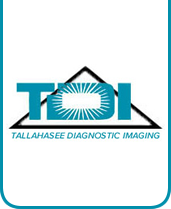MR Angiography
MR angiography (MRA) is an MRI study of the blood vessels. It utilizes MR technology to detect, diagnose and guide the treatment of heart disorders, stroke and blood vessel diseases.
Learn More About MR Angiography
MRA provides detailed images of blood vessels without having to insert a catheter directly into an artery. There is no significant recovery time and cost is substantially less when compared to standard angiography. A very small amount of gadolinium based contrast medium may be injected, unlike catheter angiography which uses a large volume of iodine-based contrast. MR contrast is very safe and the risk of an allergic reaction is extremely low.
You should let the technologist know if you have any serious health problems, or if you have had any recent surgeries. Some conditions, such as severe kidney disease, may prevent you from being given gadolinium contrast for an MRI. If you have a history of kidney disease or liver transplant, it will be necessary to determine whether the kidneys are functioning adequately.
Jewelry and other accessories should be left at home, if possible, or removed prior to the MRI scan. Because they can interfere with the magnetic field of the MRI unit, metal and electronic items are not allowed in the exam room. In addition to affecting the MRI images, these objects can become projectiles within the MRI scanner room and may cause you and/or others nearby harm. These items include:
- jewelry, watches, credit cards and hearing aids, all of which can be damaged
- pins, hairpins, metal zippers and similar metallic items, which can distort MRI images
- removable dental work
- pens, pocket knives and eyeglasses
- body piercings
In most cases, an MRI exam is safe for patients with metal implants, except for a few types. People with the following implants cannot be scanned and should not enter the MRI scanning area:
- cochlear (ear) implant
- some types of clips used for brain aneurysms
- some types of metal coils placed within blood vessels
- nearly all cardiac defibrillators and pacemakers
You should tell the technologist if you have medical or electronic devices in your body. These objects may interfere with the exam or potentially pose a risk, depending on their nature and the strength of the MRI magnet. Many implanted devices will have a pamphlet explaining the MRI risks for that particular device.
One of our board-certified Radiologists will interpret your exam and send a report to your physician within 5 business days. Contact your referring physician for any information pertaining to the findings.
Typically your referring physician will schedule an appointment for you. If you have been asked to schedule the appointment yourself, please have your physician’s order and any pre-authorization information required by your insurance or health plan provider in hand, and call 850-878-4127.
During an MRI exam, you will lie on a moveable exam table that will slowly move into the machine. This procedure is non-invasive and there is no pain associated with this exam. Some of the common distractions or discomforts include the loud tapping noises that are often made by the machine or the close proximity to the MRI machine. For patients who are claustrophobic or who become uncomfortable in these situations, they may be prescribed a mild sedative to be taken before the exam.
You also may notice a warm feeling in the area being studied. This is normal but you should not be afraid to communicate to the technologist if it bothers you. A technologist will always be available, monitoring you throughout the exam if any concerns arise.
In some cases, intravenous injection of contrast material may be administered before the images are obtained. The intravenous needle may cause you some discomfort when it is inserted and you may experience some bruising. There is also a very small chance of irritation of your skin at the site of the IV tube insertion. Some patients may sense a temporary metallic taste in their mouth after the contrast injection.
It is normal for the area of your body being imaged to feel slightly warm, but if it bothers you, notify the radiologist or technologist. It is important that you remain perfectly still while the images are being obtained, which is typically only a few seconds to a few minutes at a time. You will know when images are being recorded because you will hear and feel loud tapping or thumping sounds when the coils that generate the radiofrequency pulses are activated. Some centers provide earplugs, while others use headphones to reduce the intensity of the sounds made by the MRI machine. You may be able to relax between imaging sequences, but will be asked to maintain your position without movement as much as possible.
In some cases, intravenous injection of contrast material may be administered before the images are obtained. The intravenous needle may cause you some discomfort when it is inserted and you may experience some bruising. There is also a very small chance of irritation of your skin at the site of the IV tube insertion. Some patients may sense a temporary metallic taste in their mouth after the contrast injection.
